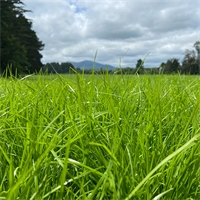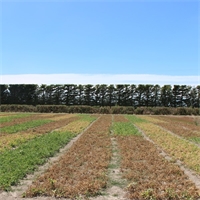29Jan
Looking ahead at NZ-USA Trade
WORDS PROVIDED BY DANIEL THOMSON, GLOBAL TRADE BUSINESS ADVISOR AT BUSINESS CANTERBURY, IMAGE PROVIDED BY BUSINESS CANTERBURY
As the world awaits the return of Donald Trump to the White House, there has been a lot of conversation about what any resulting shifts in global trade dynamics might be. I thought it was a good time to add to the conversation my key observations for New Zealand farmers.
To understand where we may be heading, it’s useful to reflect on recent history. During Donald Trump’s previous presidency, his trade policies, particularly tariffs on imports from major economies like China, reshaped global trade dynamics.
By 2019, farmers in the USA were struggling, many receiving federal assistance to keep them afloat.
Despite the USA global trade policy at the time, New Zealand’s exports to the USA remained generally stable. This stability allowed New Zealand’s exports to the USA to continue to grow, even after a slight plateau during the early stages of COVID-19. The bilateral trade between New Zealand and the USA saw a strong recovery and growth trajectory post-pandemic and in 2023, the USA was New Zealand’s fastest-growing major market, with a growth rate of 16%.
By the end of March 2024, the USA had surpassed Australia to become New Zealand’s second-largest export market, reaching NZ$14.6 billion.
This growth was driven by primary sector products dominating the goods export portfolio to the USA. In addition, there is a strong USA demand for health-focused, high-quality imports. New Zealand’s reputation for safe, natural food aligns well with the growing preference for health-conscious meat and dairy. A study by Rutgers University found that American consumers prioritise health benefits, taste, and price when selecting meat products, which bodes well for New Zealand exports.
With its dairy and meat products known for their nutritional quality, New Zealand is likely to remain competitive in the USA market regardless of global trade conditions.
For farmers in Canterbury, this trend is especially relevant. With key exports like dairy, beef, sheep, and grains, the region is well positioned to meet USA demand. Even with potential shifts in global trade, New Zealand’s focus on product quality and transparency offers a competitive edge which will hopefully see us through.
Only time will tell what the impacts will be for Canterbury, and we will be keeping a watching brief on any developments.
At Business Canterbury, we can help businesses navigate global trade dynamics. Feel free to contact Daniel Thomson at danielt@cecc.org.nz, the Global Trade Advisor from Business Canterbury, to explore strategies for success.
Related

Fantastic camaraderie, lots of deals being done, and great attendance rates were a winning formula f...
Read More

High-octane hybrid looks after your animals and your finances.
Read More

Words and image supplied by Lincoln University
Read More

The winner of the 2021 Instore Days Honda Pioneer side by side has been revealed.
Read More

One of the many things that New Zealand arable farmers do very, very well, is adapting to change. Ne...
Read More

In July 2017 Spark announced that it had commenced the development of a nationwide low power Interne...
Read More